Trees are an important part of our natural ecosystem. To properly care for them, trees need water. It’s one of the basic necessities for survival for our leafy friends. Most irrigation systems consist of sprinklers, and while this may be great for turf, it’s not necessarily the best option for your trees. Read on to learn why sprinklers do not work for trees and what we can do as an alternative.
Sprinklers are not Sufficient for Trees
As mentioned above, sprinklers are great for turf grass. However, tree roots go deeper than grass, and sprinklers often do not penetrate the ground very deeply. Sprinklers are also frequently set on a daily timer, whereas trees need a deeper, longer, and less frequent soaking. Since roots often grow where conditions are favorable, shallow soakings will NOT encourage deeper root growth, which is ideal.
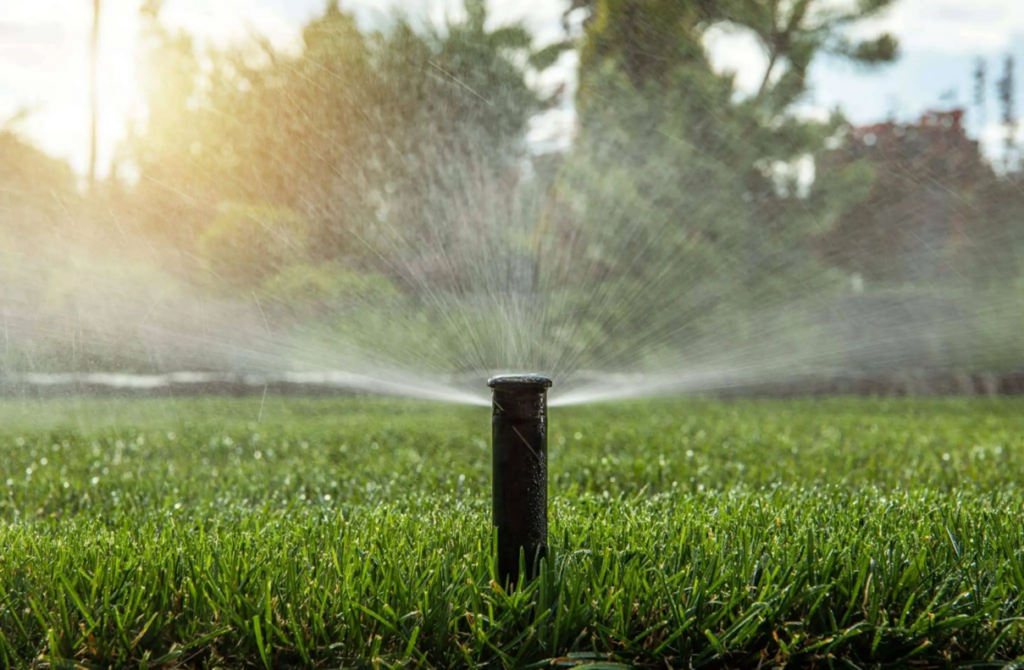
Trunk Damage and Rot
Something we’ve seen often is damage due to sprinklers repeatedly spraying the trunk of the tree. When this action is repeated daily for weeks, months, or years, the wood will not be able to dry out and rot will begin to occur which can lead to decline and death. If you have sprinklers spraying the trunks of your trees, divert them from spraying anything but the ground beneath and around them.
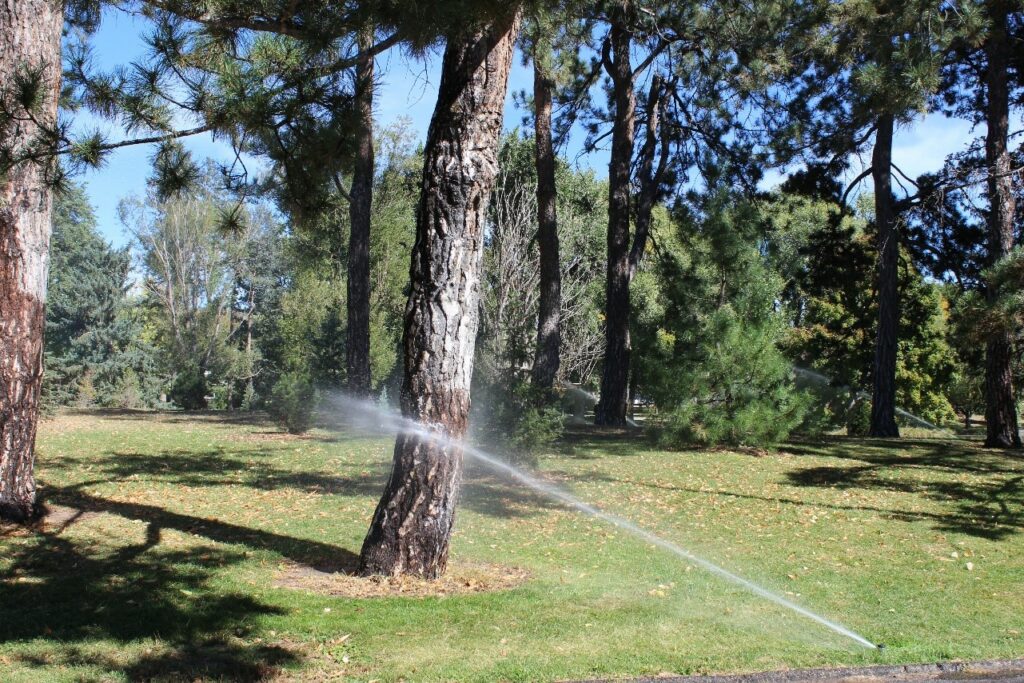
Leaf Scald or Disease
Alternatively, sprinklers can also be set to spray the foliage of trees. When water droplets remain on leaves as the sun comes out, they can act as a magnifying glass and in turn, burn the leaves. Fungal leaf diseases caused by unwanted moisture as the temperatures rise can also be a result of the unneeded spraying of leaves. As stated above, sprinklers and water should not spray any part of the plant above ground. Roots are the only part of the tree that needs to be watered.
So, if sprinklers aren’t the best option for trees, what should we do instead?
Drip Irrigation
Drip irrigation is a great alternative to sprinklers. Drip irrigation is hosing that is placed around the root zone of your trees and continuously drips for long periods. The accumulated moisture will reach the roots and is a great way to saturate your root zone.
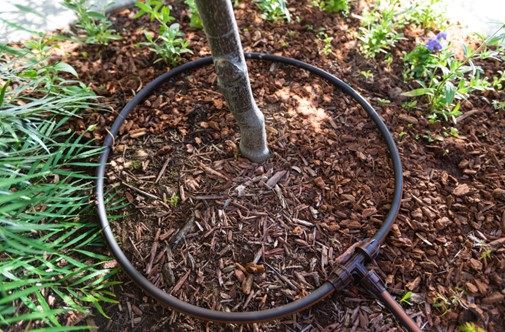
Drag a Hose to the Tree
This is one of the simplest ways to water your trees. Drag a hose to the root zone, leave it on the soil, and let it soak the area at a low to medium trickle for a set amount of time.
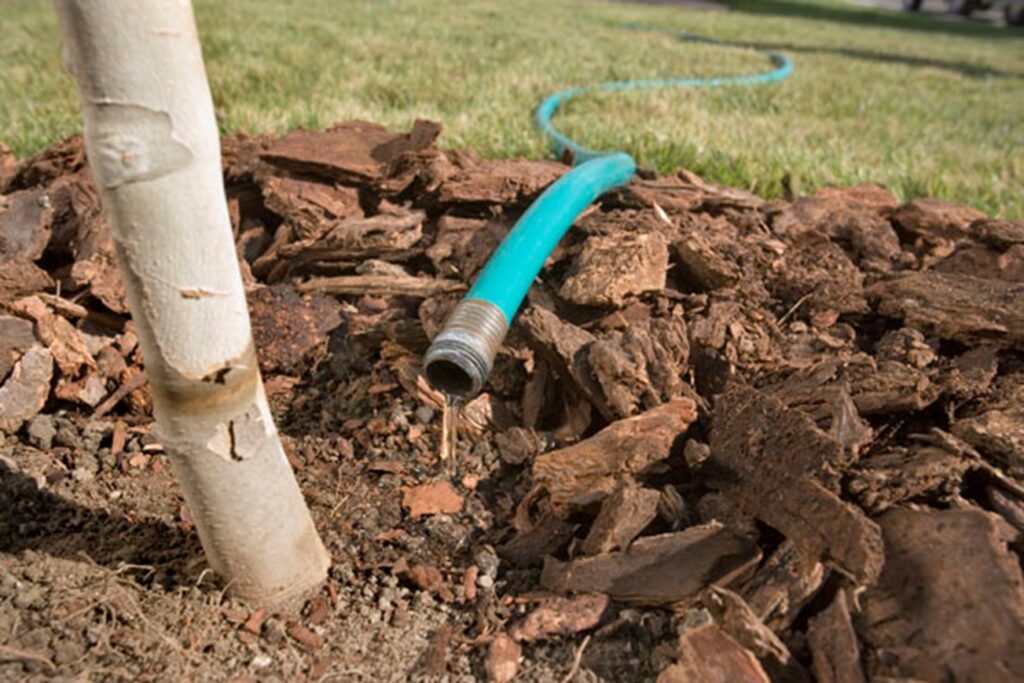
Slow-Release Watering Bags
Slow release bags wrap around the tree trunk and slowly release water to the root zone. Your only responsibility is to fill the bag periodically to ensure adequate watering.
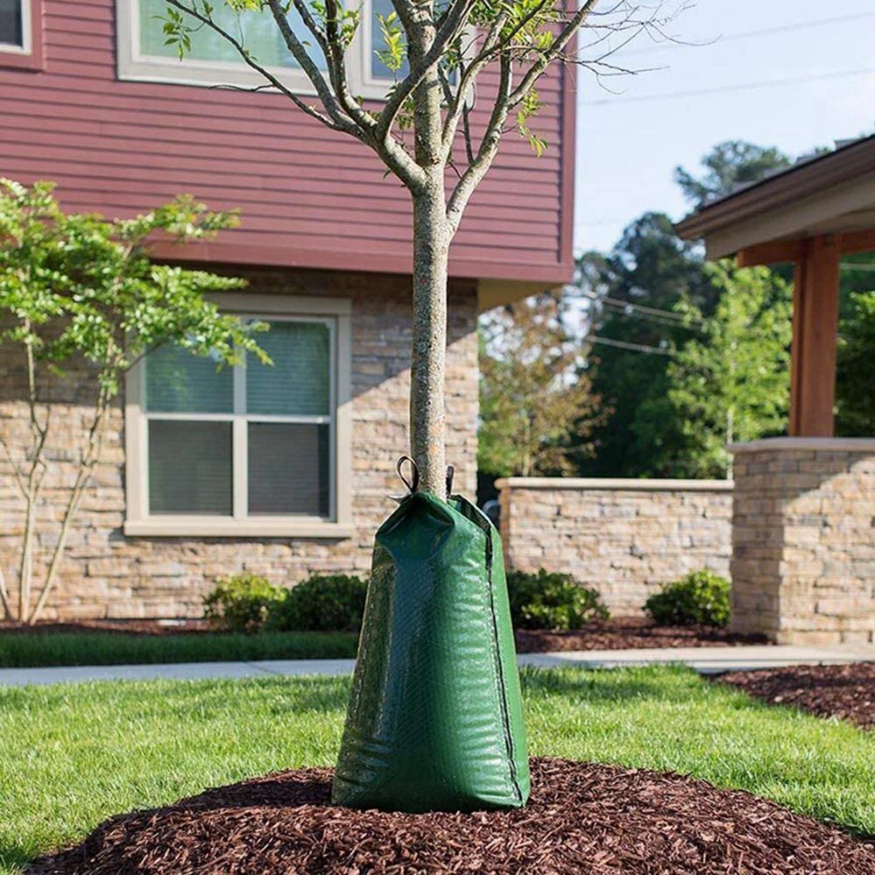
We always recommend wood mulch around your trees which can help retain moisture in the soil, keep mowers away, and break down over time to add fertility to the soil.
Proper watering for your newly planted trees is vital for success and survival. Most mature trees won’t need supplemental irrigation unless we hit a very hot and dry season. Learning to see the signs of water stress is key. Some signs your trees may be lacking water and stressed are cracking bark, leaf scorch around the margins, wilting leaves, and dropping them prematurely. On the other end of the spectrum, overwatering can be an issue that leads to roots suffocating, root rot, and even plant death. Signs of overwatering are soggy soil, spongey wood around the base of the trunk, fragile leaves that break easily, and discolored leaves. Our Plant Health Care Plan can help mitigate any of these diseases or issues all year roun if you find that your plants are suffering from over or underwatering.
While each tree species has different needs and tolerances of water, here is a basic guideline for tree watering:
If there has been no rain:
- Good slow soaking (10-15 gallons per 5″ diameter)
- 80+ degree weather = every 3rd day.
- 65-70 degrees=every 5th day.
- 50-60 degrees = every 7 days.
- 35-45 degrees = every 14-15 days.
To avoid over-watering: Do the finger test! Stick your finger as far down into the soil at the root zone. Is it still damp? If so, don’t water just yet.
If you have more questions about the health of your trees and if your trees are getting adequate water, contact us!

